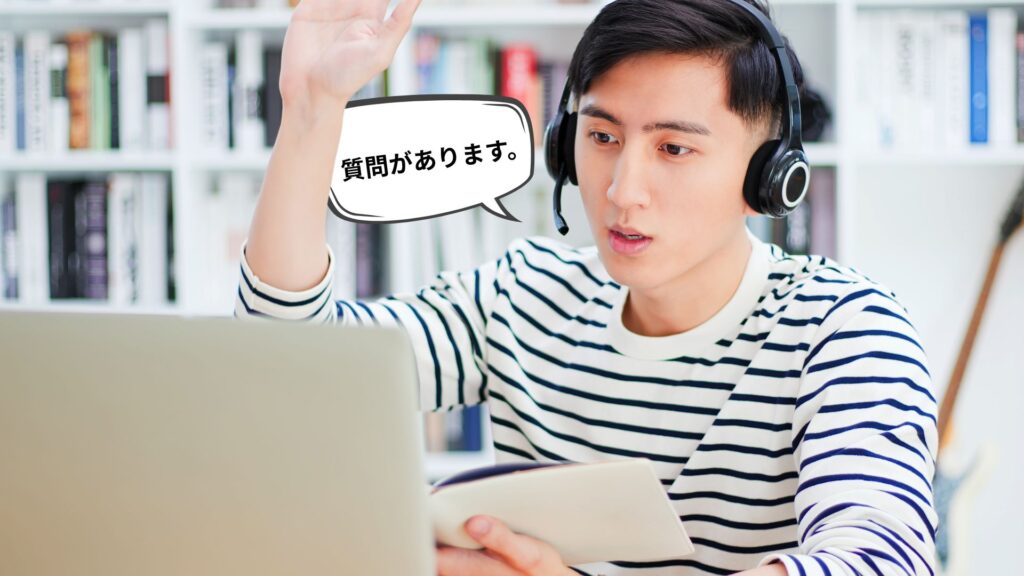
25 Useful Phrases You Should Know Before Your Japanese Class: Teacher’s Instructions Edition
JLRC – Content Team
2025/09/26

Starting a Japanese language class can feel exciting, but many learners quickly realize another challenge: understanding the teacher’s instructions. Even if you know basic greetings, classroom communication often includes phrases like “Please repeat,” “Open your textbook,” or “Let’s practice together.”
By learning these essential expressions in advance, you’ll not only follow the class more smoothly but also build confidence from day one. In this article, we share 25 teacher-instruction phrases you are most likely to hear in your Nihongo lessons—and explain how to respond naturally.
Table of Contents
1. Why Understanding Teacher’s Instructions Matters
In every Japanese class, communication goes both ways. Students ask questions, but teachers also give instructions to keep the lesson flowing.
- Build smooth interaction – You’ll understand what to do without hesitation.
- Save lesson time – Less confusion means more practice and learning.
- Boost confidence – Knowing key classroom Japanese makes you feel prepared.
- Learn cultural nuance – Japanese instructions often use polite forms, which also teach you about respect in communication.
At JLRC, our online Japanese classes highlight real-life communication. That means you’ll encounter authentic instructions from the very first lesson—just like in a real Japanese classroom.
2. 25 Common Teacher’s Instructions You’ll Hear in Your Japanese Class
We’ve grouped them by situation so you can recognize them easily.
Part 1: Starting the Lesson
- はじめましょう。
Hajimemashou. → “Let’s begin.” - 今日もよろしくお願いします。
Kyou mo yoroshiku onegaishimasu. → “Let’s work well together today.” - よし、復習しましょう。
Yoshi, fukushū shimashou. → “Okay, let’s review!”
Part 2: Textbook & Material Use
- ワークブックを出してください。
Wākubukku o dashite kudasai → “Please get your workbook.” - ○ページを見てください。
○-peeji o mite kudasai. → “Please look at page __.” - 例文を読んでください。
Reibun o yonde kudasai. → “Please read the example sentence.”
Part 3: Listening & Repeating
- 聞いてください。 Kiite kudasai. → “Please listen.”
- もう一度言ってください。 Mou ichido itte kudasai. → “Please say it again.”
- 繰り返してください。 Kurikaeshite kudasai. → “Please repeat.”
Part 4: Speaking & Practice
- さあ、練習しましょう。
Saa, renshū shimashō. → “Now, let’s practice.” - 質問に答えてください。
Shitsumon ni kotaete kudasai. → “Please answer the question.” - 日本語で言ってください。
Nihongo de itte kudasai. → “Please say it in Japanese.” - もう少し大きな声で話してください。
Mou sukoshi ookina koe de hanashite kudasai. → “Please speak a little louder.”
Part 5: Checking & Correcting
- いいですね。
Ii desu ne. → “That’s good.” - 惜しい!
Oshii! → “So close!” / “Almost!” - ちょっとちがいます。
Chotto chigaimasu. → “That’s a little different / not quite right.” - もう一度やってみましょう。
Mou ichido yattemimashou. → “Let’s try again.” - ちょっと待ってください、チェックしますね。
Chotto matte kudasai, chekku shimasu ne. → “Please wait a bit, let me check.”
Part 6: Writing & Homework

- 書いてください。
Kaite kudasai. → “That’s good.” - ノートにメモしてください。
Nooto ni memo shite kudasai. → “Please take notes in your notebook.” - 宿題をしてください。
Shukudai o shite kudasai. → “Please do your homework.”
Part 7: Ending the Lesson
- ここまでにしましょう。
Koko made ni shimashou. → “Let’s stop here.” - 今日のレッスンは終わります。
Kyou no ressun wa owarimasu. → “Today’s lesson is finished.” - よくできました!
Yoku dekimashita! → “Well done!” - また来週会いましょう。
Mata raishuu aimashou. → “See you next week.”
3. How to Respond as a Student
Don’t just listen—reply naturally! Here are some useful responses:
- はい、わかりました。
Hai, wakarimashita. → “Yes, I understood.” - すみません、もう一度お願いします。
Sumimasen, mou ichido onegaishimasu. → “Excuse me, one more time please.” - はい、できました。
Hai, dekimashita. → “Yes, I did it.”
Using these simple responses makes your class more interactive and shows your teacher that you’re engaged.
4. How JLRC Supports Your Learning

At JLRC, we understand the challenges of following instructions in a foreign language. That’s why
- We train students from day one to follow Japanese instructions and respond with confidence.
- We build practical speaking skills for natural, real-time interaction.
- We foster cultural awareness and classroom etiquette to make real-life communication in Japan smoother.
Our goal is to empower every learner to succeed, not just by teaching grammar, but by creating a real Japanese classroom environment—even online.
5. Final Thoughts
Understanding teacher instructions is the first big step to enjoying your Japanese language class. With these 25 essential phrases, you’ll never feel lost when your instructor says “Open your textbook” or “Let’s practice together.”
By preparing beforehand, you’ll gain confidence, save time during lessons, and make faster progress in Nihongo class. At JLRC, we believe that learning is not just about memorizing words—it’s about practical communication that works in real situations.


For inquiries, you may call us at (63)2-7358-0565 or (63)917-163-3371
Japanese Language Research Center
Unit 506 Cityland Shaw Tower, Shaw Blvd, Mandaluyong, 1552 Metro Manila, Philippines

For inquiries, you may call us at (63)2-7358-0565 or (63)917-163-3371
Japanese Language Research Center
Unit 506 Cityland Shaw Tower, Shaw Blvd, Mandaluyong, 1552 Metro Manila, Philippines
Copyright © 2024 JLRC Inc.
All Rights Reserved
